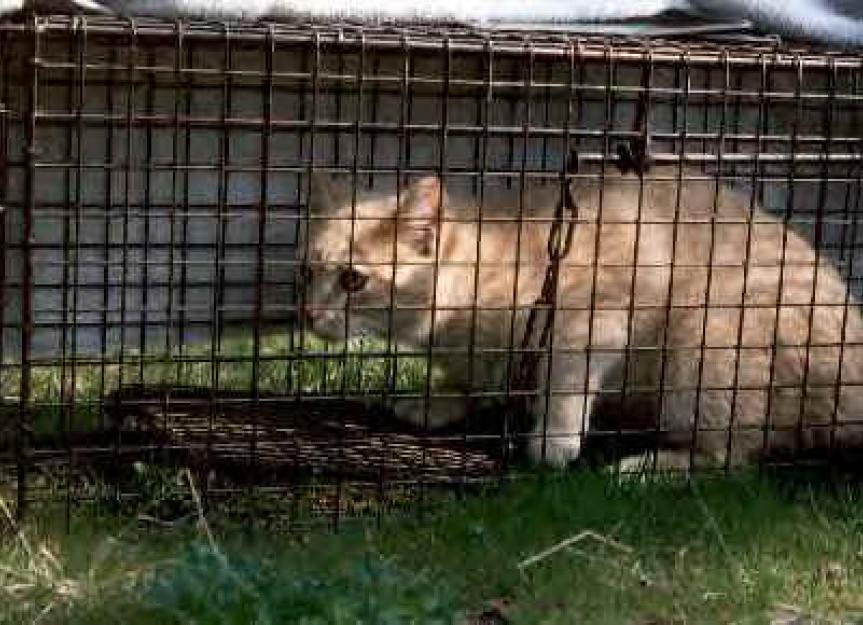On moving and relocating outdoor and feral cats: A quick and dirty how-to guide
For some reason, my email inbox gets more play on the issue of moving outdoor and feral cats than just about anything else (except those pesky deals on Viagra, which I definitely do not need and am utterly confused as to why this kind of spam gets addressed to me).
People perhaps view me as someone who would actually know more about moving and relocating felines than the average Joe. And that’s probably true. However, I’d be willing to bet that more than a handful of Dolittler’s regular readers are far more attuned to this topic than I’ll ever be.
Yet as someone who’s had cause to move ferals around when their habitats were being destroyed (a new Pizza Hut, strip mall, etc.), I’ll provide you my two pennies in this post. Here goes…
The one thing you can rely on is that cats will generally stay around their new location as long as there’s food to be had and there isn’t any more competition for it than there was before.
That goes for moving the tamer variety outdoor kitty, too. While it may be stressful to move cats from one outdoor environment to another, and though some attrition may well take place (cats lost who knows where or running back home, miles away though it may be), the majority of cats will comply with your human interventions.
(That’s my experience, anyway, and I welcome your differing opinions in your comments below.)
Nonetheless, here are a few helpful suggestions to those of you considering a move and electing to move your outdoor adoptees along with you.
1-Consider: Are these cats truly feral or the sweet outdoor types who happened to adopt your porch as their territory?
这些猫var之间有巨大差异ietals. The former will require serious trapping and stable relocation may be very difficult in the absence of their entire colony. Moving a whole colony is typically inadvisable unless it’s absolutely necessary. Perhaps a next-door neighbor will take on the care of these cats, as long as they’re few. (But care means more than just feeding—spaying, neutering and caring for injuries and illnesses is important, too.)
2-Outdoor kitties who can be picked up and lugged around (to the vet, for example)—but whom you’ve been unable to bring inside for whatever domestic reason—are the ideal candidates for relocation when moving to a new home. But consider:
∑有捕食者在你移动吗?(稀dogs, coyotes, etc.)
∑ Is it on or near a busy street?
∑ Are there ferals or many outdoor cats there?
∑ Is it a songbird sanctuary?
∑ How different is it from your previous location?
These and other issues should be considered.
3-Keep moved kitties in an enclosed area for a few days (or longer) after your move (a bathroom or garage will do if the temp is right). Interact with them as usual—if not more. Feed them their stable diets at regular intervals. Then spend time with them out of doors as you introduce them into their new environments over a relaxed weekend. Then bring them indoors at night for a week. Afterwards, they should be stable—as long as you adhere to meticulous feeding schedules.
4-Semi-ferals are the tough cases. They often aren’t attached to a colony so moving them may be doable. But you may have to trap them. Move them. Socialize them in a smaller space than they’ve ever been accustomed to (as described for the more tractable outdoor kitties in #3). Release them next to their food and water bowls. Follow the rigorous feeding schedule outlined above for at least a month and—usually—you’ve got them.
I don’t know what else you can do. Offering yummier foods than usual may help. Maybe a more protracted semi-confinement might be useful for the very stressed out personalities among them. Perhaps those far more experienced than I am in the relocation of cats can offer some tips of their own…
The most important thing to remember is to make sure you’re not exposing your moved kitties to greater dangers in your new home than they’d suffer through your absence. I know that’s not easy to determine; none of us has a crystal ball. But if we can’t bring our cats inside, we’ve got to make he most of what we CAN do for them, despite our ambulatory modern lives.
Help us make PetMD better
Was this article helpful?
